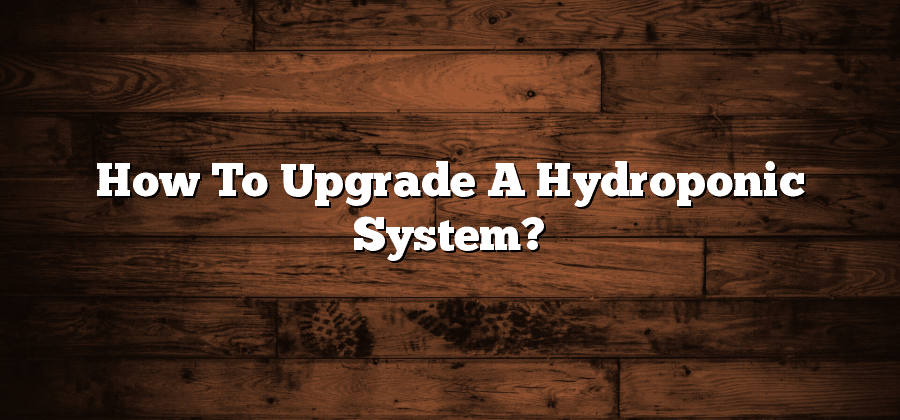Understanding the Basics of Hydroponic Systems
Hydroponic systems have gained significant popularity in recent years as a method of growing plants without the need for soil. This innovative approach relies on a nutrient-rich water solution that provides all the essential elements for the plant’s growth and development. By directly delivering these nutrients to the plant’s root system, hydroponic systems allow for increased efficiency and control over the growing environment.
One of the key advantages of hydroponic systems is their ability to maximize limited space. Unlike traditional soil-based gardening, hydroponics allows for vertical and compact setups, making it ideal for urban environments or areas with limited land availability. Additionally, these systems enable year-round cultivation, as they are not subject to seasonal limitations or adverse weather conditions. This flexibility in growing makes hydroponics an attractive option for both commercial growers and home gardeners aiming to have a constant supply of fresh produce.
Assessing the Current State of Your Hydroponic System
To ensure that your hydroponic system is functioning optimally, it is essential to regularly assess its current state. This allows you to identify any issues or areas for improvement and make necessary adjustments. One critical aspect to evaluate is the overall health of your plants. Look for signs of wilting, yellowing leaves, or stunted growth. These indicators can suggest nutrient deficiencies, incorrect pH levels, or water-related problems. Additionally, inspect the roots for any signs of disease or rot, as this can greatly impact the plants’ ability to absorb nutrients efficiently.
Another factor to consider in your assessment is the system infrastructure. Check for any leaks, clogs, or malfunctioning components, such as pumps or timers. Ensure that the water and nutrient solutions are circulating properly throughout the system and that the pH and nutrient levels are consistently maintained. Pay close attention to the lighting setup, ensuring that the bulbs are functioning correctly and providing the necessary spectrum and intensity for plant growth. By thoroughly assessing your hydroponic system, you can make informed decisions regarding any necessary upgrades or improvements for optimal plant health and productivity.
Researching and Selecting the Right Upgrades for Your System
When it comes to hydroponic systems, there is always room for improvement. As technology and research continue to advance, new and more efficient upgrades become available that can greatly enhance the performance of your system. However, before rushing into purchasing upgrades, it is important to take the time to thoroughly research and evaluate which ones will best suit your specific needs.
One key aspect to consider when selecting upgrades for your hydroponic system is the type of plants you are growing. Different plants have different requirements, and it is essential to choose upgrades that will provide the optimal environment for their growth. Take into account factors such as lighting, temperature control, and nutrient delivery systems, as these can greatly impact the overall health and productivity of your plants. Additionally, consider the size and scale of your operation, as this will determine the feasibility and cost-effectiveness of certain upgrades. By carefully researching and selecting the right upgrades for your system, you can ensure that you are making informed decisions that will lead to improved plant growth and a more efficient and sustainable hydroponic system.
Upgrading the Lighting Setup for Improved Plant Growth
When it comes to growing plants through hydroponic systems, one of the key factors that significantly impact their growth and development is lighting. The right lighting setup can make a remarkable difference in the overall health and productivity of your plants. Upgrading your lighting system can help create the optimal conditions necessary for improved plant growth.
There are several factors to consider when upgrading your lighting setup. Firstly, analyze the specific needs of the plants you are cultivating. Different plants require different levels and types of light, so it is crucial to select the appropriate lighting system accordingly. Additionally, pay attention to the duration of lighting exposure, as well as the distance and angle of the lights in relation to the plants. Lastly, consider energy efficiency and sustainability when choosing your lighting system to ensure a cost-effective and environmentally friendly solution. By upgrading your lighting setup, you can provide your plants with the ideal amount and quality of light they need for healthy growth and maximum yield.
Enhancing the Nutrient Delivery System for Optimal Plant Nutrition
One crucial aspect of hydroponic systems that greatly contributes to optimal plant nutrition is the nutrient delivery system. Without the proper nutrients, plants will not be able to grow and thrive. Therefore, enhancing the nutrient delivery system is essential for maximizing plant health and productivity.
One way to enhance the nutrient delivery system is by investing in a high-quality nutrient solution. It is important to choose a solution that is specifically designed for hydroponic systems. These solutions are typically formulated with the essential macronutrients and micronutrients that plants need for growth. Additionally, it is crucial to regularly monitor and adjust the nutrient solution to ensure that it is providing the right balance of nutrients for the plants. By maintaining a consistent, well-balanced nutrient solution, you can ensure that your plants are receiving the optimal nutrition they need to flourish in the hydroponic system.






